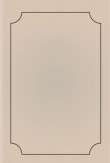You are here
قراءة كتاب The History of Insects
تنويه: تعرض هنا نبذة من اول ١٠ صفحات فقط من الكتاب الالكتروني، لقراءة الكتاب كاملا اضغط على الزر “اشتر الآن"
src="@public@vhost@g@gutenberg@html@files@10834@10834-h@images@0023b.png" alt="Picture of a Honey Bee" tag="{http://www.w3.org/1999/xhtml}img"/>
This is an extraordinary, curious, and remarkably industrious little insect, to which mankind are indebted for one of the most palatable and wholesome sweets which nature affords; and which was one of the choice articles with which the promised land was said to abound.
In every hive of bees, there are three kinds; the queen, the drones, and the labourers: of these last, there are by far the greatest number: and as cold weather approaches, they drive from the hives and destroy the drones, that have not laboured in summer, and will not let them eat in winter. If bees are examined through a glass hive, all appears at first like confusion: but, on a more careful inspection, every animal is found regularly employed. It is very delightful, when the maple and other trees are in bloom, or the clover in the meadows, to be abroad and hear their busy hum.
"Brisk as the busy bee among learning's flowers.
Employ thy youthful sunshine hours."
DRAGON FLY.
Of these flies, which are called by many Spindles, there are various species. They all have two very large eyes, covering the whole surface of the head. They fly very swiftly, and prey upon the wing, clearing the air of innumerable little flies. The great ones live about water, but the smaller are common among hedges, and about gardens.
BUTTERFLY.
Of butterflies there are many kinds. How wonderful the various changes of this class of insects! The butterflies lay their eggs: from these hatch out worms or caterpillars, which change their skins several times, and, finally, become aureliae, chrysales, or silkworms, out of which come the beautiful butterflies.
SPIDER.
There are many kinds of spiders; some of which are said to grow to such a size that they will catch small birds: some are poisonous, but the greater part are harmless, although to most people their looks are disgusting. The web of a spider, which is a net for catching its prey, is an astonishing piece of curiosity.
SILK WORM
The silk worm is a very valuable insect: it is produced from an egg of a yellowish colour, about the size of a small pin's head, that is laid by a moth, or butterfly. The above cut represents a male and female, and her eggs, of which she lays several hundreds: the moths live but a few days; they never eat, and die directly after the eggs are laid.







